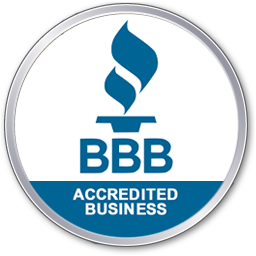With 2 million tons of sewage and other contaminants polluting the world’s water every day, it pays for businesses and companies to have a pollution prevention plan in place. And if you’re a company executive or a business owner, there’s a high chance you’ve come across the term “stormwater pollution prevention plan.” Or better yet, you found yourself Googling “swppp meaning.”
What exactly is a stormwater pollution prevention plan (SWPPP)?
SWPPPs are an essential component of stormwater management. It’s a document that identifies potential sources of stormwater contamination and provides guidance on how to reduce and eliminate those pollutants.
In other words, SWPPP is the establishment of a set of processes, procedures, and best management practices. SWPPP aims to protect bodies of water from stormwater runoff pollution. The purpose of a SWPPP is for businesses to comply with local stormwater regulations. This helps to prevent further environmental degradation.
These plans are also necessary steps to obtain the required permits to continue running a business or company.
Why Do I Need a SWPPP?
In order to fulfill Environmental Protection Agency (EPA) regulations, any business looking to obtain its National Pollutant Discharge Elimination System (NPDES) Permit must first develop a Stormwater Pollution Prevention Plan (SWPPP).
This plan is required for any facility associated with discharging pollutants into the federal jurisdiction of the Clean Water Act. A SWPPP will also help ensure your operations are in compliance with the EPA standards.
The EPA relies on these plans to protect and improve water quality.This is accomplished through controlling activities that contain small traces of pollutants.
Both permits are not required if discharging pollutants into a municipal sanitary sewer system. However, it’s best to always check with the local water authority before blindly discarding pollutants into a sanitary sewer system.
What Should a SWPPP Include?
A SWPPP emphasizes proactive methods to avoid water contamination. This means SWPPPs must include site-specific stormwater management measures, inspections, and monitoring activities. It should also provide information on SWPPP practices that the company employs and must be regularly updated to ensure compliance.
Some specific items a SWPPP must mention include the following:
- Site descriptions
- Pollution prevention team
- Activities that may cause pollution
- Control measures, schedules, and procedures
- Spill response plans
- Inspections and monitoring
- Employee training
1. Site Descriptions
A SWPPP is descriptive. It should always contain the name and address of the facility and provide general descriptions of the activities performed. A clear site map is also mandatory for complete transparency.
If you’ve never created or seen a site map before, don’t worry. The US Geological Services (USGS) maps can be used to create site maps that accurately depict the scope and location of a specific facility.
Other items site maps must include are:
- The geographic coordinates of all rivers, lakes, and other receiving water bodies
- The route of stormwater runoff from the facility
- Detailed documentation of all stormwater conveyance systems, such as ditches, pipes, swales, drains, inlets, and outfalls
- Quantifying the sources and size of potential stormwater contamination
- Regions previously contaminated by spills
- Identifying the precise areas of secondary containment structures
- Identifying fueling stations, outdoor maintenance, equipment storage, tanks, transfer, and offloading areas
- Locations of stormwater monitoring points
- Pollution origination from neighboring properties as a result of runoff
These data points should offer first responders a broad outline of the materials held on-site. It also provides insight into any pollution prevention equipment available so they can be better equipped.
2. Pollution Prevention Team
The pollution prevention team is an integral component of a stormwater pollution prevention plan. This team is responsible for implementing stormwater management measures, inspections, and monitoring activities. These teams typically consist of stormwater professionals like environment engineers and other qualified personnel.
In addition to the roles, the team should include a stormwater program coordinator who is responsible for overseeing their stormwater management practices. This may mean taking additional steps. Some examples include:
- Completing stormwater training
- Conducting regular inspections
- Regularly monitoring activities
- Reporting resulting data to the local water authority
The team’s main purpose is to help prevent stormwater pollution. This means ensuring all stormwater-related activities are in compliance with local and federal regulations. It also means ensuring that the best practices and procedures in the plan are followed.
Each team member should be identified in a SWPPP by title or name. Additionally, each team member should have complete SWPPP access and an NPDES permit.
3. Activities That May Cause Pollution
Stormwater pollution can come from almost any activity that takes place on a property. A SWPPP specifically requires that it identifies all activities where there’s a potential for a leak or spill. For example, areas exposed to rain and melted snow. Moreover, all major spills that have taken place in the past three years must be carefully recorded.
Other examples include:
- Uncovered outdoor storage causing sediment pollution
- Exposure to other pollutants while carrying sand, salt, and other loose materials through storm drains
4. Control Measures, Schedules, and Procedures
Control measures, schedules, and procedures of these plans are designed to reduce the amount of stormwater pollution generated at a site. A SWPPP must document the control measures in place and describe in detail how the measure will prevent excess stormwater pollution.
Some types of control measures and stormwater treatment systems include:
- Rain gardens
- Stormwater control basins
- Bio-retention areas
- Wetlands
- Stormwater infiltration systems
- Stormwater detention ponds
This portion of the plan also outlines the discharge limits of any pollutant. However, the methods, techniques, and procedures are not mentioned in the NPDES permit.
The SWPPP must include a list of schedules for stormwater monitoring activities and tasks to be completed. This could include inspecting storm drain inlets for signs of sediment buildup or checking fuel tanks for leaks.
Finally, the plan should include procedures for responding to stormwater pollution and reporting stormwater-related incidents.
Good housekeeping measures can be implemented at a low cost. This is because good housekeeping includes measures like:
- Regularly inspecting tanks and containers
- Quickly cleaning up any spills or leaks
- Scheduling regular waste removal services
- Keeping materials sheltered from the elements
5. Spill Response Plans
Like most things in life, perfection is nearly impossible. And even the best-laid plans are subject to failure.
That’s why all SWPPPs include spill response plans. A spill response plan is required to minimize the likelihood of a failed plan and help keep our environment as pollution-free as possible.
Facilities will have a spill response plan in place that satisfies regulations and addresses potential stormwater pollutants aren’t required to update their plans. Additionally, retaining copies of the current plan can serve as a tangible piece of evidence that the facility is prepared for the worst.
6. Inspections and Monitoring
Stormwater outflows need to be routinely monitored so that discharged pollutants don’t surpass established limitations. However, the monitoring frequency will fluctuate depending on the pollutant and established limitations.
Inspections can be continuously conducted or only conducted a few times a year.
A vast majority of states require facilities to track their results and submit corresponding reports to validate adherence. Moreover, any non-compliances must be self-reported by the facility.
Regular inspections are mandatory to ensure all control measures and precautionary processes are followed and remain effective. If a facility is ever audited, having inspection forms on record will prove that there’s been an in-depth monitoring system set in place.
7. Employee Training
Employee training is a key component of stormwater pollution prevention plans. Training involves educating staff on stormwater runoff, how to assess and mitigate risks, and understanding the stormwater control measures in place. It also covers what actions to take to prevent stormwater pollution from occurring in the first place.
Effective employee training should:
- Include instruction on stormwater monitoring
- Cover reporting any non-compliance to the appropriate regulatory agency
- Include an overview of stormwater pollution
- Include sections on management practices and permit requirements
- Include stormwater management plans
This training can be easily integrated into other pieces of training like spill response, SPCC, and RCRA. It’s also imperative to document that employees have received training on their role in preventing stormwater contamination. For any more questions regarding a SWPPP, contact Alpha Environmental Services in Portland, OR.




